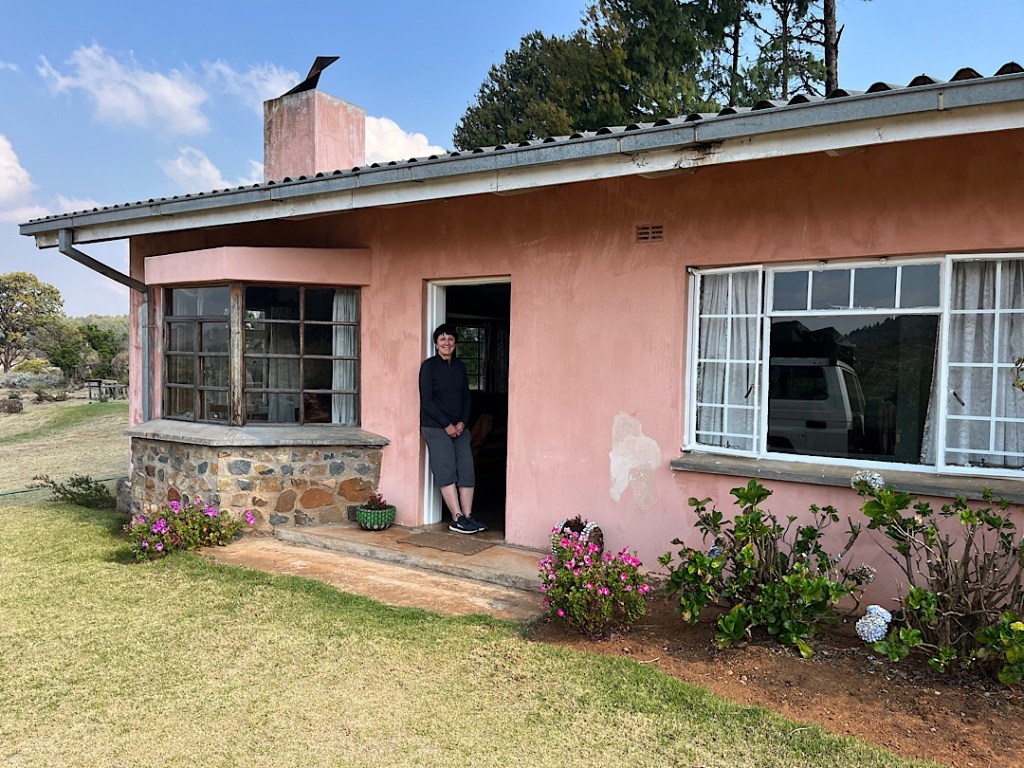I was nervous about the driving part of our “self-drive” Zimbabwean safari. Steve also was worried. We’d heard the roads haven’t been maintained for 30 years. That drivers were almost suicidal in their obliviousness while speeding through intersections. That potholes and other obstructions turned traveling on rural roads into a potentially deadly game of Chicken.

As we approached the start of our trip here, I awoke on a couple of nights thinking about how easy it would be to die. But we’d heard from several sources that we’d be fine if we just took it easy. Were they right?
Now that we’re two long drives into the adventure, I’m think they were. A little before 9 Monday morning (9/25) we climbed into our loaded Land Cruiser and drove east from Ant’s guesthouse, heading away from the heart of Harare. The few stoplights we encountered seemed to be working, a rarity, according to what Ant had said. Traffic was light and no one did anything crazy. Soon we paid our two dollars at a toll booth and were passing fields and wooded areas. The further east we went, the lighter the traffic got, and I can tell you I this: When you’re almost alone on the road in a bruiser of a vehicle that can blow over potholes and other rough patches with ease, you begin to relax.
That’s not to say driving in Zim is just like driving in La Jolla. Paved roads are narrow but shrinking, the edges nibbled away by rain and wear. Those ragged fringes often are an inch or two above the adjoining dirt, and if one went over such a mini-escarpment at high speed (say, to avoid a head-on collision with a bus trying to pass someone), one could flip one’s vehicle and come to a messy end.
But Steve never drove at high speed, and the sights and landscapes entertained us: folks unloading huge truckloads of oranges…

,,,or making bricks or selling wooden sheds (or were they tiny homes?)

When we got hungry, we lumbered off the tarmac and parked on a dirt stretch near an informal bus stop. We opened up the Cruiser’s back, unfolded two chairs, let down our cooking shelf, made ourselves cheese and tomato and avocado sandwiches, and gobbled them down with chips.

To reach our destination in the northern highlands we had to pull off the main road and bounce over dirt and boulders for more than an hour. That wasn’t pleasant, but I don’t think we saw any other vehicle along the entire punishing stretch. We had that night and another full day to relax and enjoy the glorious countryside.






Wednesday we drove eight and a half hours, stopping midway to refuel at a Total Station. For 13 gallons of diesel, we paid $88 (plus a dollar tipto the friendly guy who cleaned our windshield) — more than the price at home. But it was still a relief to see confirmation we wouldn’t be dealing with fuel shortages (another Zimbabwean thing, at least occasionally).
Descending out of the mountains, we dodged more animal traffic…

And I thrilled to this sight of our first baobab trees on this trip.


Human automotive competition for the road remained light, and it disappeared entirely once we turned onto the washboard lane leading to our destination in the amazing Save (pronounced Sah-vay) Valley Conservancy.
The other scary byway in Zimbabwe is the Internet highway. If good paved roads are scarce, access to the global information stream is rarer. Here our beloved T-Mobile phone service, which gives us instant connectivity in more than 100 countries, provides only text and phone coverage, No data. Ant’s guest house was equipped with good WiFi but we haven’t been anywhere else that has had it.
As part of his services, Ant did provide us with an aging Galaxy Android phone, and we bought $20 of air time from a roadside vendor near Ant’s Sunbird Guest House. It took some work, but Steve finally figured out how to use the Android as a hotspot for all our devices. That’s how I was able to publish my Zimborientation post from our remote mountain shelter Monday night. It felt miraculous.
Since we left there, however, we haven’t had any phone signal most of the time (and if the Galaxy can’t get a signal, we get nothing.) If you’re reading these words, that means I finally found a spot of service. In the meantime, we’ll have to make do with focusing on the actual world around us. That’s not a bad thing.